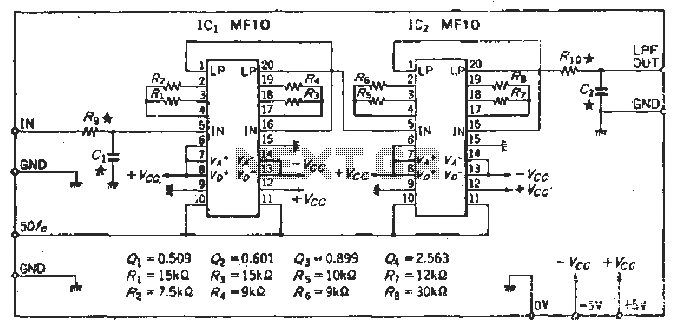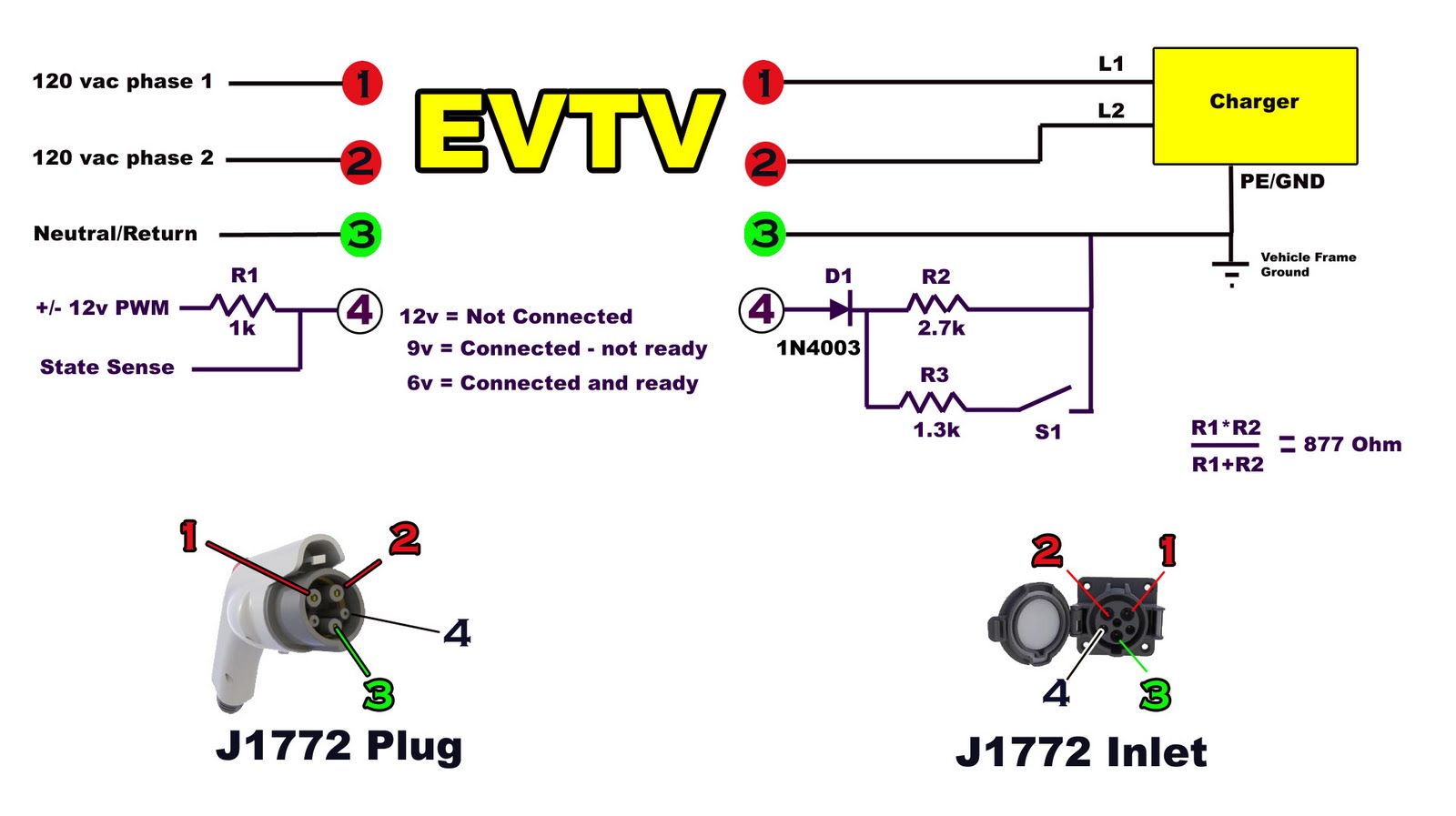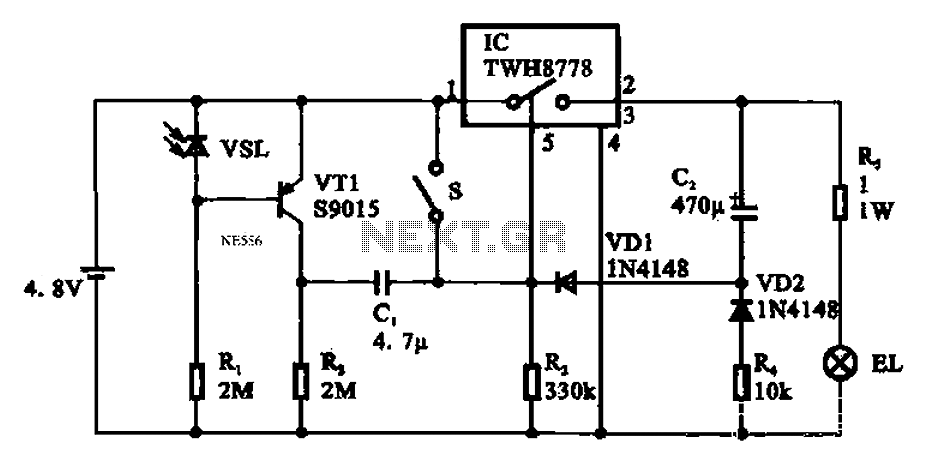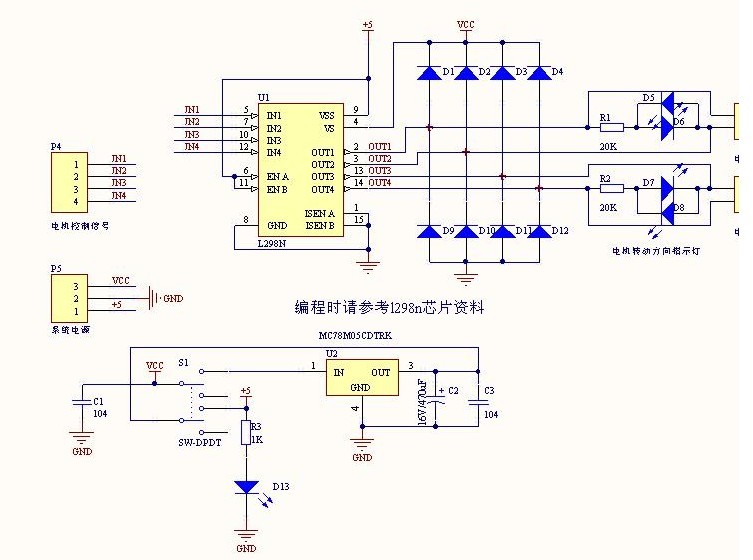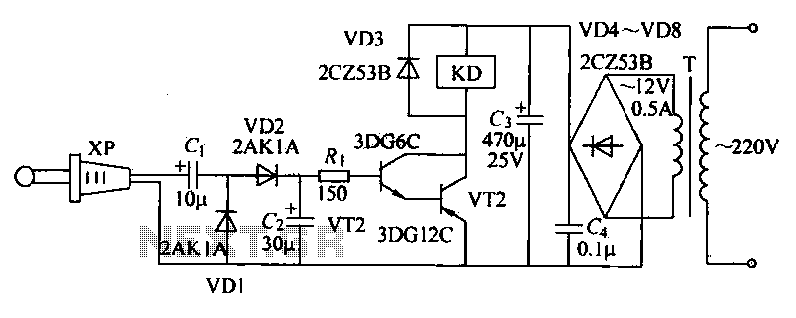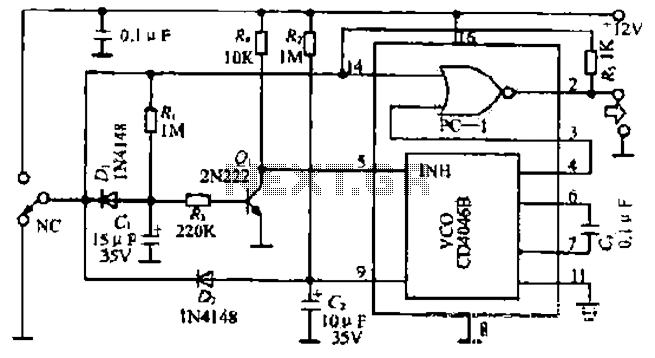
Intermittent start-stop cycle control circuit of seven b
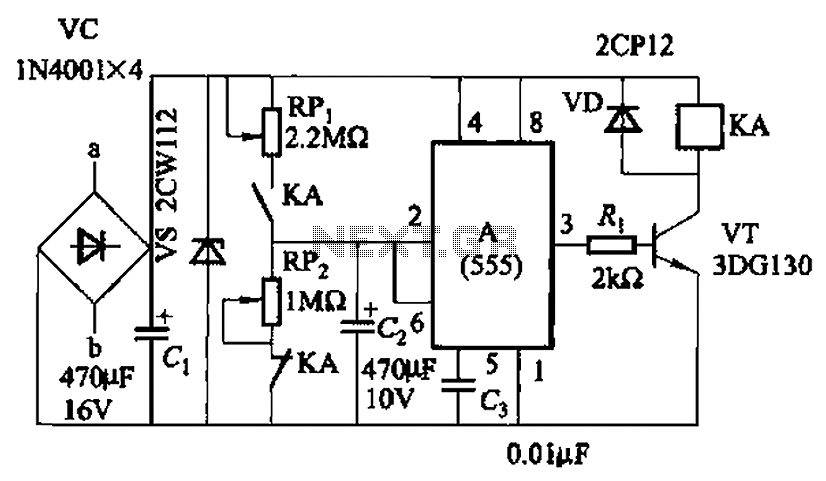
The circuit, as illustrated in Figure 3-82, employs a 555 IC to control a motor automatically, managing its start and stop cycles. The running and stopping times of the motor can be adjusted by modifying the values of potentiometers RPi and RPz.
The circuit utilizes the 555 timer IC in an astable configuration to create a pulse-width modulation (PWM) signal that drives the motor. The frequency and duty cycle of the PWM signal are determined by the resistors RPi and RPz, along with a timing capacitor connected to the 555 IC. By adjusting these potentiometers, the user can fine-tune the duration that the motor remains in operation versus the duration it remains off, allowing for flexible control over the motor's performance.
In this configuration, the 555 timer operates by charging and discharging the timing capacitor, which generates a square wave output. This output can be connected to a transistor or a relay, which acts as a switch to control the power supplied to the motor. When the output from the 555 IC is high, the transistor is turned on, allowing current to flow through the motor and initiating its operation. Conversely, when the output is low, the transistor turns off, cutting power to the motor and halting its operation.
The choice of components, such as the specific values of RPi and RPz, will affect the motor's operational characteristics, including its speed and the responsiveness of the start/stop cycles. Proper selection of the timing capacitor is also crucial, as it influences the frequency of the PWM signal. This circuit design is particularly useful in applications requiring automated control of motor functions, such as in robotic systems, automated doors, or conveyor belts. Circuit shown in Figure 3-82. It uses 555 IC A motor to achieve automatic control of start and stop cycles. Adjust potentiometer RPi and RPz, respectively, to change the motor running and stop times.
The circuit utilizes the 555 timer IC in an astable configuration to create a pulse-width modulation (PWM) signal that drives the motor. The frequency and duty cycle of the PWM signal are determined by the resistors RPi and RPz, along with a timing capacitor connected to the 555 IC. By adjusting these potentiometers, the user can fine-tune the duration that the motor remains in operation versus the duration it remains off, allowing for flexible control over the motor's performance.
In this configuration, the 555 timer operates by charging and discharging the timing capacitor, which generates a square wave output. This output can be connected to a transistor or a relay, which acts as a switch to control the power supplied to the motor. When the output from the 555 IC is high, the transistor is turned on, allowing current to flow through the motor and initiating its operation. Conversely, when the output is low, the transistor turns off, cutting power to the motor and halting its operation.
The choice of components, such as the specific values of RPi and RPz, will affect the motor's operational characteristics, including its speed and the responsiveness of the start/stop cycles. Proper selection of the timing capacitor is also crucial, as it influences the frequency of the PWM signal. This circuit design is particularly useful in applications requiring automated control of motor functions, such as in robotic systems, automated doors, or conveyor belts. Circuit shown in Figure 3-82. It uses 555 IC A motor to achieve automatic control of start and stop cycles. Adjust potentiometer RPi and RPz, respectively, to change the motor running and stop times.
